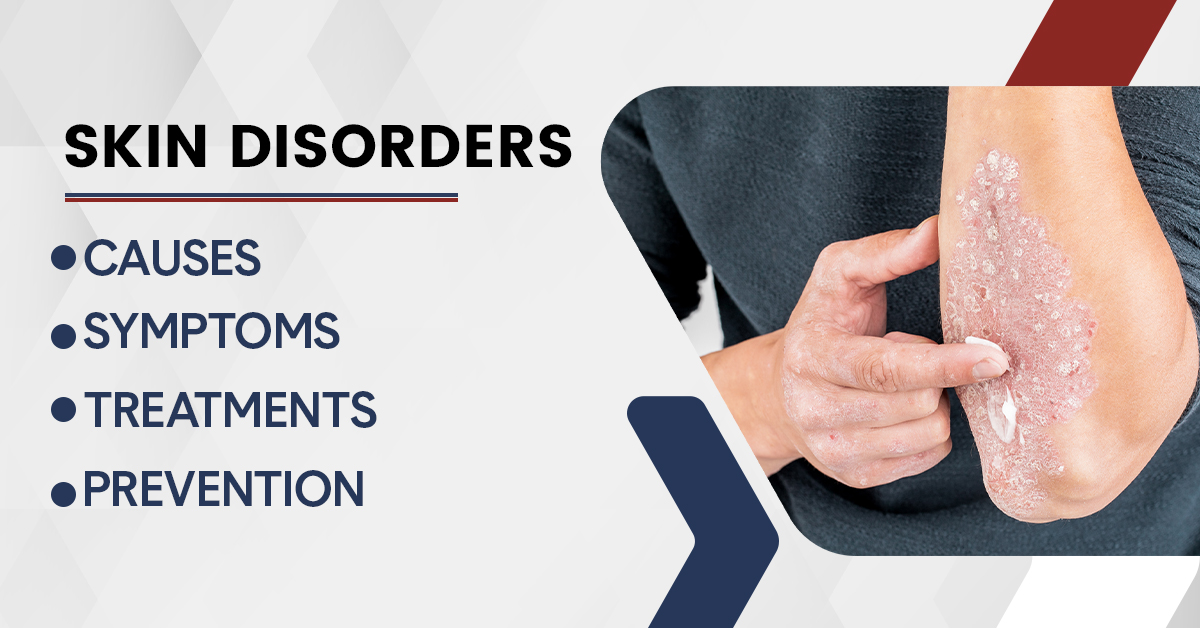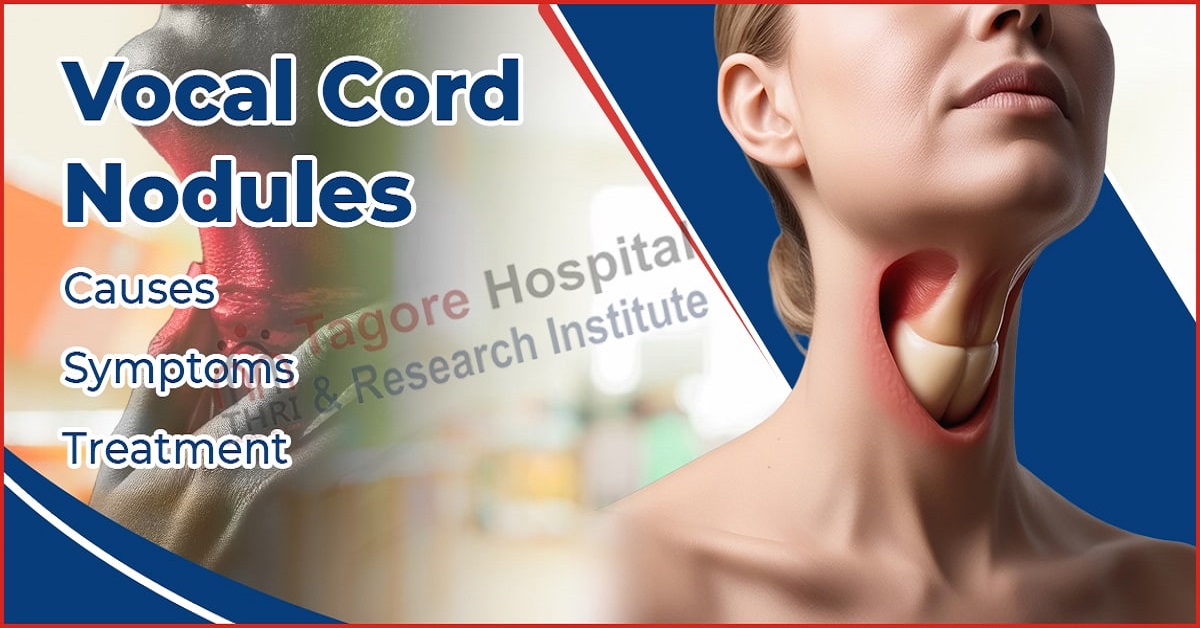- By THRI Admin
- Posted April 25, 2022
Introduction
The skin can be affected by hundreds of conditions. There may be similarities in symptoms among the more common disorders, so learning what distinctions to look out for is crucial.
Disease-related to the skin accounts for 1.79 of the global burden of disease. One in four people in the United States suffers from a skin disorder. By learning to differentiate one condition from another, a person can provide home care, but it can be crucial to seek a dermatologists diagnosis and treatment.
Types of Different Skin Disorders:
There are various types of skin disorders, below are some of them:
1. Acne: A clump of oil glands, bacteria, and dead cells cause a plug to form in the skin follicle and swell.
2. Peeling Skin Syndrome: It is similar to having a lifelong sunburn, where you can peel back the top layer of skin. Your skin doesn't hurt, but it can sometimes become red, thick, dry, and blistered. This is usually a genetic condition that develops quite early in life. Other typical skin treatments do not help and may even be harmful. Some, like petroleum jelly and medicines you put on warts and calluses, might make them feel and look better, but others will not make them feel or look better.
3. Chromhidrosis: Lipofuscin is a pigment that is found in human cells. People with this condition have too much lipofuscin in the sweat glands or the lipofuscin is chemically different. In addition to colored sweat, a dark circle may develop on the nipples or the underarms. You must stop the sweat glands to stop this. If you get regular Botox shots, you can apply a cream every day.
4. Necrobiosis Lipoidica: Rough, raised red patches appear on your shins and grow into larger, flatter patches. The red border and yellow center have a shiny, stickiness that is unlikely to disappear. Skin cancer might result from slow-healing sores called ulcers that can easily split and form. Those who develop this condition have diabetes or will soon develop it. Your doctor may wait to start treatment if you haven't developed ulcers yet.
5. Epidermolysis Ichthyosis: It can cause babies to have red, blistered, raw-looking skin that will easily injure and become inflamed. The skin is covered in rows of thick, rough scales, especially around the joints and creases. There is a genetic test that can tell whether you are suffering from the disease, which is named after the Greek word for "fish." Treatment is not easy. When the scales are removed, the skin becomes fragile and prone to infection.
6. Morgellons Disease: Whenever you feel this, it's almost as if something is crawling on you, stinging, orbiting you. The skin of some people is covered in tiny fibers, and they report having issues with memory, mood, and concentration. Many scientists believe that the condition is a mental health issue, though some studies suggest a possible link to an infection. Your doctor will rule out other causes and may prescribe treatment if you are mistakenly convinced you are "infested."
7. Erythropoietic Protoporphyria: Protoporphyrin is a light-sensitive chemical that the body has a hard time processing when you have this condition. It accumulates in the top layers of our skin and reacts to both direct light and indirect light. You may feel that your skin tingles, itches, or burns. If you don't cover up, you may get blisters and suffer severe pain. Medicine, vitamin A, and iron might help.
8. Fish Scale Disease: Your skin's natural shedding becomes slow, causing a buildup of proteins called keratin, resulting in dry skin, flaky scalps, and fish-like scales (especially on your elbows and thighs), and deep, painful cracks. It is also possible that your skin will become darker. There are several causes of ichthyosis Vulgaris, including transmittable diseases like cancer, thyroid disease, HIV, and AIDS. A humid, warm climate tends to make it worse.
9. Leprosy: Individuals who are not naturally immune to it (most of us are) might contract it from another person or from handling an armadillo. It may take a very long time for symptoms to appear. Look for red spots or numbness in the area or a finger or toe, along with swollen skin. You may experience slight sensitivity in your eyes. It can be treated with antibiotics, and if you don't wait too long to get it treated, you should recover fully.
10. Atopic Dermatitis: There is a lot of itching associated with this disease. When you scratch, you will experience redness, swelling, cracking, fluid weeping, crusts, and scaling.
11. Blau Syndrome: There are usually scaly rashes on your trunk, arms, or legs before age 4 and sometimes there are bumps under your skin. This is caused by your immune system overreacting to inflammation. It is common to also have arthritis, eye problems, and kidney disease in people with it. There is a version called early-onset sarcoidosis that is not inherited from your parents.
12. Hidradenitis Suppurativa (HS): A chronic, noncontagious, inflammatory condition known as Hidradenitis suppurativa (also known as acne Versa) is characterized by acne-like bumps or boils and tunnels on the surface of the skin and under it.
13. Argyria: Tiny pieces of silver build up in your tissues, causing your skin to look bluish-gray. It is usually permanent, and it's caused by colloidal silver, which is taken as a dietary supplement. Exposure to the sun can exacerbate it. No health benefits have been confirmed for colloidal silver, and it may also inhibit the absorption of thyroxine and antibiotics.
14. Acanthosis Nigricans: If you have dark, thick, velvety patches of skin that itch and smell, you may try to scrub them off. They are most commonly found on elbows, knees, knuckles, and armpits. While this condition isn't harmful to your health, it can be a sign of other health issues, such as obesity, diabetes, hormone problems, drug reactions, and even cancer. Consult your physician.
15. Elastoderma: A protein called elastin plays a key role in the strength and flexibility of your skin. During stretching, your skin does not spring back, and it sags and folds. However, it is unclear why this occurs. It usually occurs around the elbow and knee areas, especially in the neck, arms, and legs. The condition is usually relieved with a surgical procedure but returns soon after.
Symptoms of skin disorders:
Skin rashes are a primary symptom of allergies to the skin. You may feel itching, see a raised bump, or experience redness, and eventually experience any of the following symptoms:
- Rashes
- Itching
- Redness
- Swelling
- Raised bumps
- Discolored skin patches
- Open sores, lesions, or ulcers
- Skin flaking or scaling
- Rough and cracked skin
Causes of skin disorders:
A tiny cut is all it takes for a microbe to enter the skin. Infections usually begin in this way. There are times when a wound is not so small, for example after having surgery. In any case, your skin is more likely to become infected if it has been damaged in any way.
An infection can be caused by bacteria, viruses, or fungi. They can also be caused by yeasts and parasites too. Many of these are harmless on the surface of the skin, but bacteria are especially abundant. However, when they get inside a break, they can cause problems.
Sometimes a break in the skin is not necessary, and sometimes an invading microbe gains the upper hand because your immune system is weakened, or is misdirected into attacking the wrong things. There are many reasons why skin infections occur. Some of the main causes of skin infections are as follows:
- Hair follicles and pores are filled with bacteria
- Microorganisms that live on the skin, such as parasites, fungi, and bacteria
- And various viruses
- Weaken immune system
- Contamination with irritants, allergens, or infected skin
- due to hereditary factors
- Immune system diseases, kidney diseases, thyroid conditions, and other conditions affecting the body
Diagnosis of skin disorders:
The most common way a healthcare provider can detect a skin problem is by visually inspecting the skin. Depending on the answers your provider receives from examining your skin, your provider may order tests such as:
- Performing a biopsy involves removing a small piece of skin to examine under a microscope.
- Culture is the process of testing for bacteria, fungi, or viruses on a skin sample.
- Patch tests, which apply small amounts of substances to see if they cause an allergic reaction.
- Blacklight examination (Wood light test), uses UV light to examine your skin's pigmentation.
- Diascopy is the process of pressing a microscope slide against the skin to see if it changes color.
- Dermatoscopy involves the use of a hand-held device called a dermatoscope to identify skin lesions.
- The Tzanck test analyzes blister fluid to determine if it is herpes simplex or herpes zoster.
Treating skin disorders:
Different diseases require different treatments. As a result, there is no uniform treatment for every single skin disease and only a doctor can tell you which treatment will be the most appropriate for you.
Viruses, bacteria, and fungi may cause skin infections. Some infections can develop when you are exposed to hazardous environmental conditions. Symptoms can include severe pigmentation, rashes, bumps, abscesses, open wounds, and pimples.
A cream can be used to treat a skin condition whose symptoms are fairly localized. Applied topically, these creams contain antibacterial, antiviral, and antifungal ingredients, according to the need.
In some cases of skin diseases, pills may be prescribed as a treatment, especially when the disease is widespread and does not present localized symptoms. Additionally, injections can be used to treat diseases.
When a skin disease is caused by external environmental factors, the cause, as well as the disease itself, must be addressed. The disease will likely occur again and again if this step is not taken. Medications can be used to treat rashes caused by insects within your mattress, or your mattress can be exterminated to eliminate the bugs.
Preventing skin Disorders:
The majority of skin disorders are hereditary, so they can't be prevented. Following these tips can help you prevent other types of infectious skin disorders.
- Hands should be washed frequently with soap and warm water.
- Drinking glasses and eating utensils should not be shared.
- Do not come into direct contact with someone who has a skin infection.
- Before using anything in a public place, like the gym, make sure it is clean.
- Do not share personal items, such as hairbrushes, blankets, or swimsuits.
- Take a full seven-hour nap each day.
- Water is essential to your health, so drink a lot of water a day.
- Reduce your stress levels.
- Maintain a healthy diet.
Following these tips will help you prevent skin conditions that are not infectious, such as atopic dermatitis and acne.
- Use a gentle cleanser every day on your face to prevent acne and atopic dermatitis.
- Moisturize your skin every day.
- Avoid as many allergens as you can.
- Protect your skin from harsh chemicals.
- Avoid exposure to extreme heat, wind, and cold.
Keep your skin healthy and glowing by learning about common skin diseases and treatments. By doing this, you will have a better understanding of your skin disease and can seek the advice of a dermatologist to determine the most appropriate treatment method.
Tags





